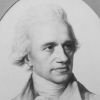Handbook of Infrared Astronomy
by I.S. Glass
Cambridge University Press, ISBN 0 521 63311 7 (hardback), 0 521 63385 0
(paperback), Cambridge University Press, 1999. Pp x + 185.
Dedication to Hettie: Celestial rosy red, love's proper hue
(Milton, Paradise Lost).
|
Infrared radiation was discovered by the astronomer Sir William
Herschel at the beginning of the nineteenth century, while he was
examining the colours of the solar spectrum for their heating effects.
Real exploitation of infrared wavelengths for astronomy had to await the
development of sensitive detectors and selective filters in the last
decades of the 20th century.
|

|
Many astronomical problems of current interest are best investigated
in the infrared. These include the characterization of high-redshift
galaxies, the discovery of brown dwarfs, the study of obscured galactic
nuclei (including our own) and the calibration of distance indicators.
Interstellar extinction, which bedevils many visual-region investigations,
is minimal in this region.
New techniques and improved detection limits are being introduced almost
continuously. Detectors are increasing in area, new large
telescopes are providing ever-increasing sensitivity and resolution, and
instruments on satellites are operating at wavelengths hidden
from us up to now by the earth's atmosphere. Exciting spectroscopic
discoveries are appearing in the journals as the data from recent
satellites are analysed.
The idea of the book is to introduce the peculiarities and specialized
techniques of infrared astronomy to a general audience that includes
professionals and students. The emphasis is on basic facts and figures.
Obviously, it was not realistic to try to cover all fields of contemporary
research in a short book, but whenever possible examples have been drawn
from areas of current interest.
The first chapter deals with the basic facts of blackbody radiation.
A short review of atomic and molecular physics follows. The second chapter
covers the general properties of the earth's atmosphere and outlines the
main infrared surveys that have taken place or are planned. Chapter 3 is
devoted to photometry, emphasizing its fundamental aspects and the
importance of traceability and calibration. Chapter 4 is an introduction
to spectroscopy, treating firstly the stars. Photodissociation regions,
which emit mainly in the infrared and millimetre region, are
followed by HII regions and some ``Rosetta Stone" spectra of representative
objects. Chapter 5 is devoted to dust and its central role in star
formation. Finally, because some understanding of the technology is important
in obtaining reliable results, the last chapter covers the basics of
infrared instrumentation.
Return to start
